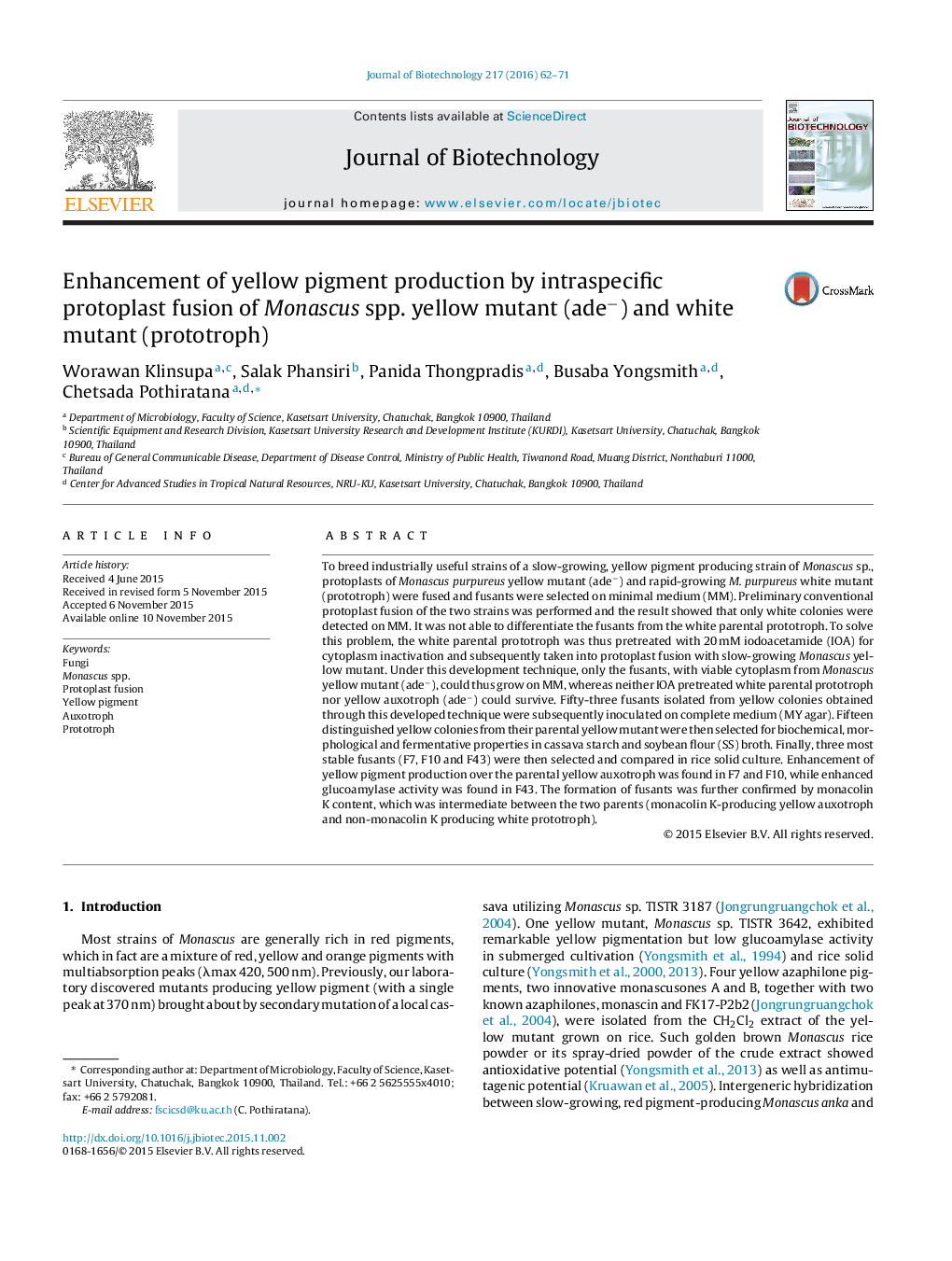| Article ID | Journal | Published Year | Pages | File Type |
|---|---|---|---|---|
| 6490784 | Journal of Biotechnology | 2016 | 10 Pages |
Abstract
To breed industrially useful strains of a slow-growing, yellow pigment producing strain of Monascus sp., protoplasts of Monascus purpureus yellow mutant (adeâ) and rapid-growing M. purpureus white mutant (prototroph) were fused and fusants were selected on minimal medium (MM). Preliminary conventional protoplast fusion of the two strains was performed and the result showed that only white colonies were detected on MM. It was not able to differentiate the fusants from the white parental prototroph. To solve this problem, the white parental prototroph was thus pretreated with 20Â mM iodoacetamide (IOA) for cytoplasm inactivation and subsequently taken into protoplast fusion with slow-growing Monascus yellow mutant. Under this development technique, only the fusants, with viable cytoplasm from Monascus yellow mutant (adeâ), could thus grow on MM, whereas neither IOA pretreated white parental prototroph nor yellow auxotroph (adeâ) could survive. Fifty-three fusants isolated from yellow colonies obtained through this developed technique were subsequently inoculated on complete medium (MY agar). Fifteen distinguished yellow colonies from their parental yellow mutant were then selected for biochemical, morphological and fermentative properties in cassava starch and soybean flour (SS) broth. Finally, three most stable fusants (F7, F10 and F43) were then selected and compared in rice solid culture. Enhancement of yellow pigment production over the parental yellow auxotroph was found in F7 and F10, while enhanced glucoamylase activity was found in F43. The formation of fusants was further confirmed by monacolin K content, which was intermediate between the two parents (monacolin K-producing yellow auxotroph and non-monacolin K producing white prototroph).
Related Topics
Physical Sciences and Engineering
Chemical Engineering
Bioengineering
Authors
Worawan Klinsupa, Salak Phansiri, Panida Thongpradis, Busaba Yongsmith, Chetsada Pothiratana,
